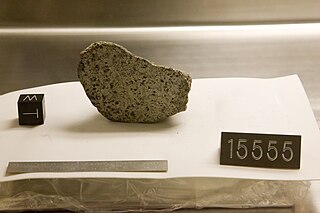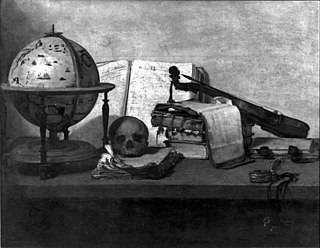
The Isabella Stewart Gardner Museum is an art museum in Boston, Massachusetts, which houses significant examples of European, Asian, and American art. Its collection includes paintings, sculpture, tapestries, and decorative arts. It was founded by Isabella Stewart Gardner, whose will called for her art collection to be permanently exhibited "for the education and enjoyment of the public forever."

Art theft, sometimes called artnapping, is the stealing of paintings, sculptures, or other forms of visual art from galleries, museums or other public and private locations. Stolen art is often resold or used by criminals as collateral to secure loans. Only a small percentage of stolen art is recovered—an estimated 10%. Many nations operate police squads to investigate art theft and illegal trade in stolen art and antiquities.

Nazi plunder was organized stealing of art and other items which occurred as a result of the organized looting of European countries during the time of the Nazi Party in Germany.

Three famous paintings were stolen from the Kunsthalle Schirn in Frankfurt in 1994. Two thieves and a dealer were caught and sentenced to prison, but the people who had ordered the theft were never brought to justice. This case of art theft is unique in that the paintings were recovered by buying them back from the people behind the theft, resulting in a heavy profit for the Tate Gallery, owner of two of the paintings.
Lost artworks are original pieces of art that credible sources or material evidence indicate once existed but that cannot be accounted for in museums or private collections, as well as works known to have been destroyed deliberately or accidentally or neglected through ignorance and lack of connoisseurship.
The International Foundation for Art Research (IFAR) is a non-profit organization which was established to channel and coordinate scholarly and technical information about works of art. IFAR provides an administrative and legal framework within which experts can express their objective opinions. This data is made available to individuals, associations and government agencies.
The Art Loss Register (ALR) is the world's largest database of stolen art. A computerized international database that captures information about lost and stolen art, antiques, and collectibles, the ALR is a London-based, independent, for-profit corporate offspring of the New York–based, nonprofit International Foundation for Art Research (IFAR). The range of functions served by ALR has grown as the number of its listed items has increased. The database is used by collectors, the art trade, insurers, and law enforcement agencies worldwide. In 1991, IFAR helped create the ALR as a commercial enterprise to expand and market the database. IFAR managed ALR's U.S. operations through 1997. In 1998, the ALR assumed full responsibility for the IFAR database, although IFAR retains ownership. In 1992, the database comprised only 20,000 items, but it grew in size nearly tenfold during its first decade.

Of the 270 Apollo 11 Moon rocks and the Apollo 17 Moon Rocks that were given to the nations of the world by the Nixon Administration, approximately 180 are unaccounted for. Many of these rocks that are accounted for have been locked away in storage for decades. The location of the rocks has been tracked by researchers and hobbyists because of their rarity and the difficulty of obtaining more.

In the early morning hours of March 18, 1990, 13 works of art were stolen from the Isabella Stewart Gardner Museum in Boston. Guards admitted two men posing as police officers responding to a disturbance call, and the thieves bound the guards and looted the museum over the next hour. The case is unsolved; no arrests have been made, and no works have been recovered. The stolen works have been valued at hundreds of millions of dollars by the FBI and art dealers. The museum offers a $10 million reward for information leading to the art's recovery, the largest bounty ever offered by a private institution.

Operation Icarus is a police investigation into the organised theft and black market trade of religious and church artefacts in England and Wales. The investigation, led by West Mercia Police, commenced in 2013 and has subsequently been declared a major incident. According to ArtWatch UK—an organisation which campaigns for the protection of works of art and architecture—the investigation has uncovered "the systematic plundering of churches in England and Wales [that] has gone largely unnoticed for up to ten years." Detective Inspector Martyn Barnes, head of the operation, said: "Some of the items that have been taken are described as priceless because they are unique. Some of them may fetch tens of thousands of pounds on the black market; others go for £50, £60. We believe that some of these crimes date back to 2002—2003."

Robert Donati – who went by the name of Bobby and was also known by the nickname Bobby D – was an American career criminal. Along with his twin brother Richard, he was associated with the New England-based Patriarca crime family. His criminal history dates to 1958, when he was 17. He and his brothers were long believed to be part of the Angiulo Brothers' crew, with whom they carried out burglaries.
John Francis Good was an American agent of the Federal Bureau of Investigation (FBI) who created the Abscam sting operation in the late 1970s and early 1980s. Abscam led to the arrest and conviction of several elected officials at the local, state, and federal level, including Mayor of Camden, New Jersey Angelo Errichetti and U.S. Senator Harrison A. Williams, using a fictional Arab sheikh seeking political favors as bait. The Abscam story was portrayed in the 2013 film American Hustle; in the movie, Bradley Cooper portrayed a composite character that was based on Good and two other FBI agents who worked on the case during the two-year-long operation.

The 1972 Montreal Museum of Fine Arts robbery, sometimes called the Skylight Caper, took place very early in the morning of September 4 of that year. Three armed robbers used a skylight under repair to gain entry to the museum from its roof, tied up the three guards on duty, and left on foot with 18 paintings, including a rare Rembrandt landscape and works by Jan Brueghel the Elder, Corot, Delacroix, Rubens, and Thomas Gainsborough, as well as some figurines and jewellery. One of the Brueghels was returned by the thieves as an initiative to start ransom negotiations. None of the other paintings has ever been recovered and the robbers have never been arrested or even publicly identified, although there is at least one informal suspect.
David Locke Hall is a highly decorated former Assistant United States Attorney, Naval Intelligence officer, and author.

On 25 November 2019, royal jewellery was stolen from the Green Vault museum within Dresden Castle in Dresden, Saxony, Germany. The stolen items included the 49-carat Dresden White Diamond, the diamond-laden breast star of the Polish Order of the White Eagle which belonged to the King of Poland, a hat clasp with a 16-carat diamond, a diamond epaulette, and a diamond-studded hilt containing nine large and 770 smaller diamonds, along with a matching scabbard. The missing items were of great cultural value to the State of Saxony and were described as priceless; other sources estimate the total value at about €1 billion. However, in the years following the burglary, more accurate estimates place the total value of the stolen items at around €113 million.

In July 1993, a total of 304 items were stolen from the National Art Museum of Azerbaijan in Baku. They included 274 artworks and 30 medieval miniatures. The most valuable of them was Women's Bathhouse by Albrecht Dürer, valued at about $10 million. Other stolen artworks were made by Rembrandt, Anthony van Dyck, Nicolas Poussin, Jacob van Ruisdael and Jean-François Millet, among others. The artworks had been smuggled to the United States, from which they were later recovered. In 2001, twelve artworks were returned to their previous place of display, the Kunsthalle Bremen in Germany, while the rest were returned to Azerbaijan.

The Nationalmuseum robbery was the robbery of three paintings worth a combined total of $30–45 million USD from the Nationalmuseum in Stockholm, Sweden, on 22 December 2000. The stolen paintings were a self-portrait by Rembrandt and two Renoir paintings, Conversation and Young Parisian. The paintings have been recovered.

Colcor, short for Columbus County Corruption, was an undercover criminal investigation conducted by the United States Federal Bureau of Investigation (FBI) into corrupt activities involving government officials in Columbus County, North Carolina. While the FBI had for several years received complaints about local alleged protection rackets and election fraud, they did not begin an investigation until 1980, when one of their former informants moved to the county and reported that he was being told to pay bribes to ensure the smooth operation of his business. Their investigation centered on the activities of undercover agents posing as corrupt businessmen with connections to the Detroit Mafia.
Charles Patrick Landon Hill was a British-American art crime investigator and Vietnam veteran. He is best known for recovering Edvard Munch's The Scream three months after it was stolen. Hill also played a crucial role in the recovery of many of the paintings stolen by Martin Cahill from Russborough House.















